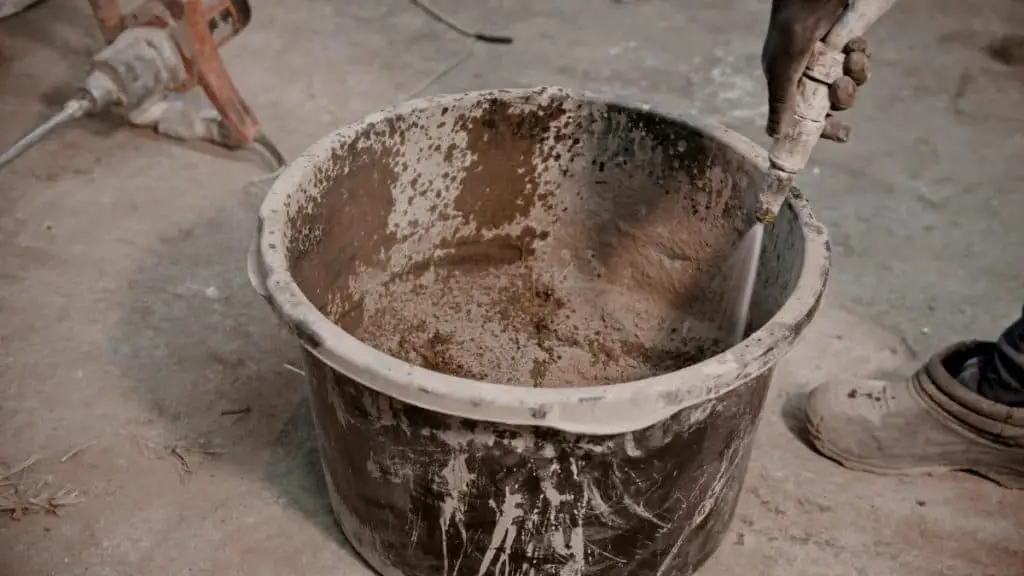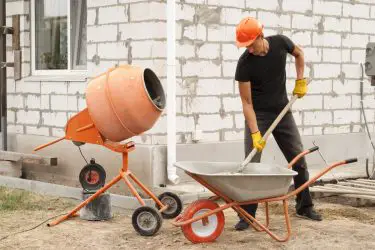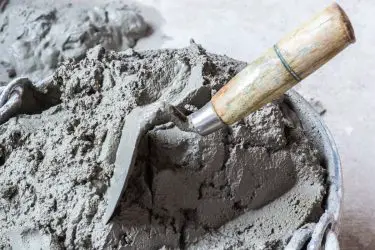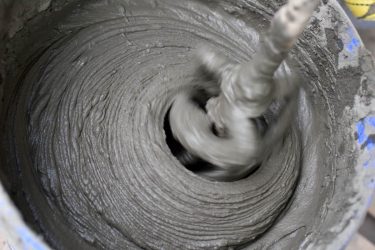Concrete is one of the most common materials used in building houses, stairs, sidewalks, driveways, or any other common structure in our society today. Concrete is a strong, durable, and reliable material to use that is fairly easy to make. Even though this substance is used for a variety of projects, there are only a few ingredients needed to make it.
Concrete is made by combining a mixture of dry ingredients including powder cement, fine and coarse aggregates like sand and gravel, as well as water. When combined correctly, this mixture forms a thick paste that can be used on any construction project to help build and strengthen materials.
It might be surprising to you what materials are actually used to make this substance that is used for practically everything.
Powder Cement
Unknown to a majority of the public, cement and concrete are different things! Cement is an integral ingredient in the making of concrete. Powder cement gives concrete the needed base and substance for the entire building material.

Powder cement is made up of natural, raw materials heated and ground down into a fine powder. The result is smooth silky dust.
A variety of natural substances are used to make powder cement, ranging from calcium, silicon, aluminum, iron, limestone, shells, and chalk or marl combined with shale, clay, slate, blast furnace slag, silica sand, and more.
Limestone, clay, and sand are the most common materials to be used when making powder cement.
To make powder cement, the desired materials are first mined in quarries. After gathering them, the materials are crushed twice into much smaller pieces and then placed in a grinder to reduce the size even more.
Later, it is placed in a heated rotating kiln at 1450 degrees Fahrenheit. These materials are then cooled down and grounded down a second time to produce the powder cement used in concrete.
Concrete is known as being the most used building material, but it is also known as one of the most environmentally damaging materials that can be used just based on the process that is needed to make it.
During the sintering process, the process by which it is heated in the rotating kiln, contribute to about 40% of the carbon dioxide emissions just based on the fuels alone that are needed to power it.
The other 60% comes from the materials themselves when they are heated at the super temperatures they are exposed to in the kiln.
Powder cement was first introduced to be used in making concrete in the 19th century in England. Before this, calcined gypsum and different forms of a limestone mix were used to be the main ingredient of concrete.
Aggregates
Aggregates in concrete refer to the rocky materials, like sand and gravel, that are essential to the concrete mixture. Aggregates give the concrete mixture added strength and also texture so that the mixture can stick together.
Sand, gravel, and other crushed stones of varying size and grit are used as aggregates in cement. There are two different categories of aggregates used for making cement- fine and coarse.

The shape and the size of the aggregate play a big role in the outcome of the concrete mixture.
When using bigger and rougher textured aggregates, more water is needed in the concrete mixture to make it more workable.
The aggregates in the concrete mixture can also influence the durability, skid resistance, grading, surface moisture, and other factors when mixing, pouring, and drying concrete.
Aggregates are usually found and collected in a dry river, lake, or other body-of-water beds, as well as from crushing rocks from quarries. They are of course cleaned and processed in a particular way to avoid contamination of any kind of substance that could interfere with the concrete mixture it will go in.
Water
The concrete mix doesn’t come alive until water is added to the aggregate and the dry powder cement.
Usually, a good concrete mix is 15-20% water, with 10-15% of it being cement, and the other 60-75% being aggregate.
The amount of water in a mix of concrete is crucial to the material’s integrity and quality.
The ratio of water to dry ingredients always depends on the type of cement being used for the specific project and also the desired texture. It’s safe to always follow the directions given on the back of the concrete mix.

The water in the concrete mix determines the quality and texture of the concrete. Concrete should have a smooth and thick consistency, almost like peanut butter or oatmeal.
If the concrete doesn’t have enough water, it will be dry and clumpy. Although this mixture will be strong, it will be almost impossible to use because it cannot be easily spread. Furthermore, this mixture will not be able to dry properly in its desired mold because of the premature drying due to lack of water.
On the flip side, if the concrete has an excess of water, it will be soupy and too wet.
The more water you add to a concrete mix, the less integrity and strength it will be able to achieve once it is set up and completely dries.
This mixture will be too weak to really support anything.
The overuse of water can also lead to structural issues in the future like cracking or spalling. Although the wetter mixture will be much easier to work with and spread, it will be making a very big mess when using it.
To achieve the correct consistency in concrete, you must pour in the water in 2 portions. When first combining the water with the aggregates and powder cement, do not add in all of the water at once.
Read more: How to Mix Concrete the Right Way
If all the water is added at once, this might change the consistency of the mixture too fast and it will not achieve its desired outcome.
At first, add only 2/3 of the recommended water to the dry mixture. After it is stirred, continue to add the remaining 1/3 of the water until the consistency is smooth and thick, like a smoothie or milkshake.
Add more water if the mixture is too dry, but be wary of adding too much because it will weaken the concrete.




